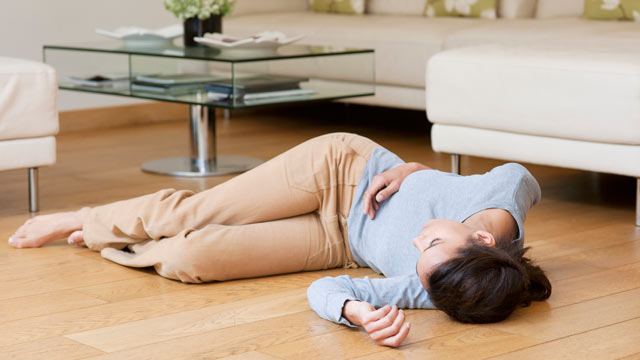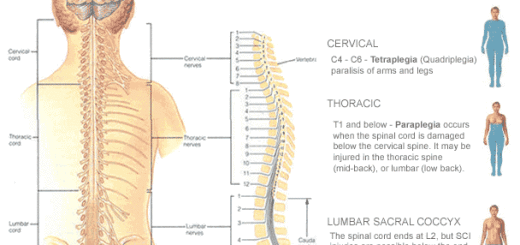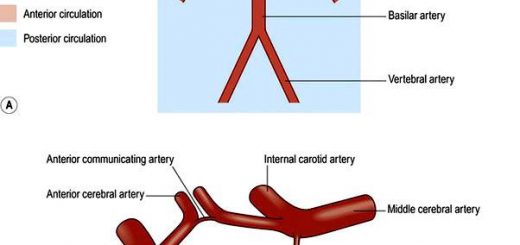First Aid Tip: First Aid for Fainting
Most of us will have experienced a faint at some point in our lives, but what exactly causes this phenomenon?
What is a faint and why does it happen?
A faint is a brief and sudden loss of consciousness, normally due to a reduction in the blood flow to the brain. Normally, a faint results in a person falling to the floor.
The brain requires a constant supply of Oxygen and nutrients, this supply is provided by the blood.
There are numerous things that can interrupt this supply. For example, blood tends to pool in the legs during periods of inactivity (e.g: standing or sitting for long periods of time).
If you suddenly stand up, the heart has to work harder to pump this blood upwards against gravity. This can cause a “head rush” in some people, with a feeling of dizziness.
However in other people, this interruption in the blood supply to the brain causes them to loose consciousness – a faint.
Generally once a person has fainted and fallen to the floor, they regain consciousness very quickly. This is because when lying down, the heart finds it easier to pump blood to the brain as it isn’t working against gravity.
There are some tell-tale signs that someone is going to faint. They may go very pale/white, and look unsteady on their feet. Also they may complain of feeling ‘light headed’ or ‘funny’.
Signs and Symptoms of Fainting
The symptoms of fainting include:
- Lightheadedness
- Dizziness
- Collapse
- Nausea
- Heightened restlessness and anxiety
- Sweating
- Changes in breathing
- Altered vision
How to Treat a Patient Who Has Fainted
Here is how to treat a patient who has fainted:
- Help the person lie down. In case someone has fainted on a chair, help them get to the ground.
- Roll the person on their side if they are unconscious. Check if they have a pulse and if they are breathing. In case they don’t have a pulse and are not breathing, call the emergency medical services and begin CPR.
- Keep the person’s feet elevated above the height of their head, if possible.
- If heat was the reason behind the person fainting, loosen or remove their clothes and attempt to cool them down by fanning them or wiping them with a wet cloth.
- If they have fallen, help them in case they are injured.
- If the person doesn’t gain consciousness in a few seconds or recover within a couple of minutes, call for an ambulance.
FAQs
What causes a person to faint?
A person could faint due to hyperventilation, anxiety, distress, pain, and heat.
What foods prevent fainting?
The foods that prevent fainting include avocados, bananas, beans, dates, mushrooms, spinach, lentils, dried fruits, and melon.
Can anxiety cause fainting?
Yes, anxiety can lead to fainting.
Is fainting a risk?
At times fainting could be a sign of an underlying medical condition, such as a brain or heart disorder. Therefore, it’s important to get it checked by a doctor, especially if you haven’t experienced a fainting spell before.
Conclusion
A person usually faints due to a drop in blood pressure, which causes a reduction of blood flow and oxygen to their brain.
Fainting spells aren’t a cause for concern. However, one should get in touch with their healthcare provider if they faint too often or display other symptoms. By finding the cause behind it, fainting spells can be prevented in the future.







This is very helpful. I never fainted in my life but I have a friend who has a tendency to faint and keeps getting me into awkward situations. I’m always worried that she’ll get hurt, but she’s been lucky so far. I guess because she’s so used to it, she just stands up and resumes whatever it is that she was doing. Now I know better not to let her. Also, people insist on getting her salty food, they say it’s good for the pressure. I don’t know how to respond to those. Is it okay to give them food right after fainting?
No having salt does not help the situation.
*I mean food*
Hey there John, love the site. I have to disagree on the point about raising the legs to improve blood flow to the brain. This is actually a dangerous technique and should’ve never been advised in first aid.
It was described just at the outbreak of WW1 by an American called Walter Cannon who within 2 years had turned his position around saying that it wouldn’t work.
There are so many medical studies that show its dangerous. Here is a link to the research. http://bestbets.org/bets/bet.php?id=1710
I come across this advice all the time and hopefully can change peoples mind by giving them facts not first aid fiction 🙂 keep up the good work on the site
Hi there,
Thanks for your insightful comments! I agree the evidence is definitely not conclusive when it comes to raising the legs, despite this the ‘official’ advice remains to raise the legs during a faint.
I’m going to do some more research and reading, and perhaps write a blog post on the subject. Thanks again for your comments 🙂
Kind regards,
John & the team